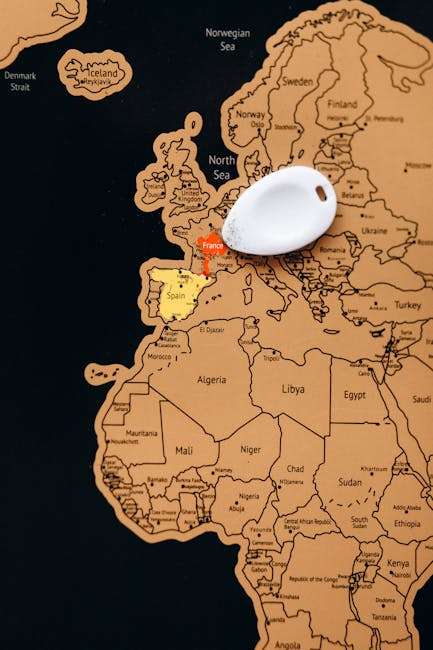Top 5 Healthiest International Cuisines ?
In today’s globalized world, exploring international cuisines is easier than ever. What’s more exciting is discovering that some of the most delightful dishes from around the world are also among the healthiest. Whether you’re a seasoned foodie or just looking to spice up your diet, there’s plenty to learn and savor from these nutritious culinary traditions.
Table of Contents
1. Introduction
2. Japanese Cuisine ??
3. Mediterranean Cuisine ?
4. Thai Cuisine ??
5. Indian Cuisine ??
6. Peruvian Cuisine ??
7. Conclusion
8. FAQ
1. Japanese Cuisine ??
Japanese cuisine is renowned for its simplicity and emphasis on fresh, seasonal ingredients. It’s no surprise that Japan boasts one of the highest life expectancies in the world.
Key Ingredients
Staples like fish, rice, and seaweed form the foundation of this diet. Rich in omega-3 fatty acids, fish such as salmon and mackerel contribute to heart health. Seaweed, packed with iodine and other essential minerals, plays a crucial role in maintaining a healthy thyroid.
Health Benefits
A typical Japanese meal is low in calories and high in nutrients, promoting weight management and reducing the risk of chronic diseases. The practice of “hara hachi bu,” or eating until you are 80% full, further aids in maintaining a healthy weight.
2. Mediterranean Cuisine ?
The Mediterranean diet is often hailed as one of the healthiest in the world, and for good reason. Spanning countries like Greece, Italy, and Spain, this cuisine emphasizes plant-based foods, healthy fats, and lean proteins.
Key Ingredients
Olive oil, a staple of the Mediterranean diet, is rich in monounsaturated fats that support heart health. Fresh fruits and vegetables, whole grains, and legumes provide essential vitamins and fiber.
Health Benefits
This diet is associated with a lower risk of cardiovascular diseases, improved brain function, and longevity. Its anti-inflammatory properties make it a powerful ally in preventing chronic illnesses.
3. Thai Cuisine ??
Thai cuisine is a symphony of flavors, combining sweet, sour, salty, and spicy notes in perfect harmony. Beyond its taste, Thai food offers numerous health benefits.
Key Ingredients
Herbs and spices such as lemongrass, ginger, and turmeric not only add depth to dishes but also contribute to their medicinal properties. Coconut milk, a common ingredient, provides healthy fats and a creamy texture.
Health Benefits
Thai dishes often incorporate vegetables and lean proteins, making them nutrient-dense and low in calories. The use of anti-inflammatory ingredients, like turmeric, supports a healthy immune system and reduces inflammation.
4. Indian Cuisine ??
Indian cuisine is as diverse as its culture, offering a colorful array of dishes that are both delicious and nutritious. Its use of spices is legendary, providing a wealth of health benefits.
Key Ingredients
Spices like cumin, coriander, and turmeric are not only flavor enhancers but also offer antibacterial and anti-inflammatory properties. Lentils and chickpeas are excellent sources of protein and fiber, making them a staple in vegetarian diets.
Health Benefits
The high fiber content in Indian meals aids digestion and helps maintain a healthy weight. Many dishes are prepared with minimal oil, ensuring they are low in unhealthy fats.
5. Peruvian Cuisine ??
Peruvian cuisine is a delightful blend of indigenous and international influences, offering a wide variety of flavors and textures. It’s increasingly recognized for its health benefits.
Key Ingredients
Quinoa, a superfood native to the Andes, is a complete protein packed with essential amino acids. Fresh fish, particularly ceviche, provides lean protein and omega-3 fatty acids.
Health Benefits
The diverse range of fruits and vegetables used in Peruvian dishes ensures a vitamin-rich diet. The emphasis on fresh and natural ingredients promotes overall well-being and supports a healthy lifestyle.
Conclusion
Each of these international cuisines offers unique flavors and health benefits, proving that healthy eating doesn’t have to be dull or repetitive. By incorporating elements from these culinary traditions into your diet, you can enjoy a diverse, nutritious, and delicious eating experience.
FAQ ?
Q: What makes Japanese cuisine so healthy?
A: Japanese cuisine is rich in fresh fish, seaweed, and vegetables, which contribute to its high nutritional value and low-calorie content, promoting longevity and reducing chronic disease risk.
Q: Why is the Mediterranean diet often recommended?
A: The Mediterranean diet emphasizes whole foods, healthy fats, and lean proteins, which support heart health, brain function, and overall longevity, making it highly recommended by health professionals.
Q: Can spicy Thai food be healthy?
A: Absolutely! Thai cuisine’s use of herbs, spices, and fresh ingredients not only makes it flavorful but also offers various health benefits, such as anti-inflammatory properties and essential nutrients.
Q: How does Indian cuisine contribute to a healthy diet?
A: Indian cuisine’s use of spices, legumes, and vegetables provides a nutrient-dense diet rich in fiber, protein, and antioxidants, supporting digestion and overall health.
Q: Is Peruvian food good for you?
A: Yes, Peruvian cuisine often incorporates superfoods like quinoa and fresh fish, offering a wealth of nutrients and promoting a healthy, balanced diet.
